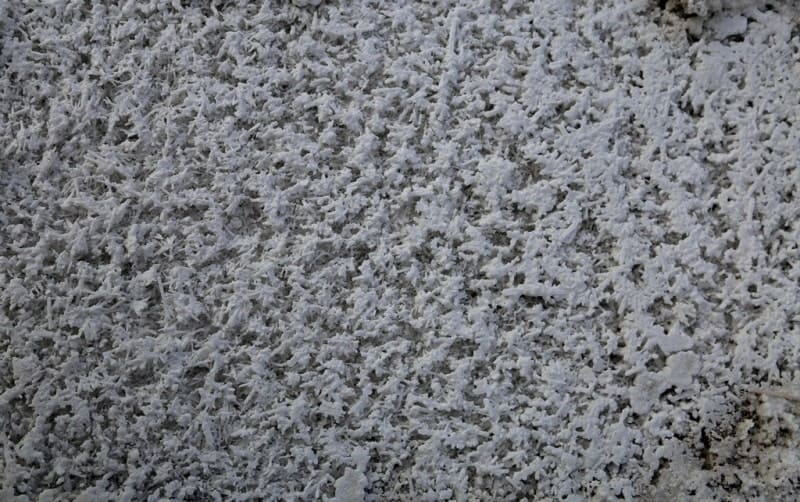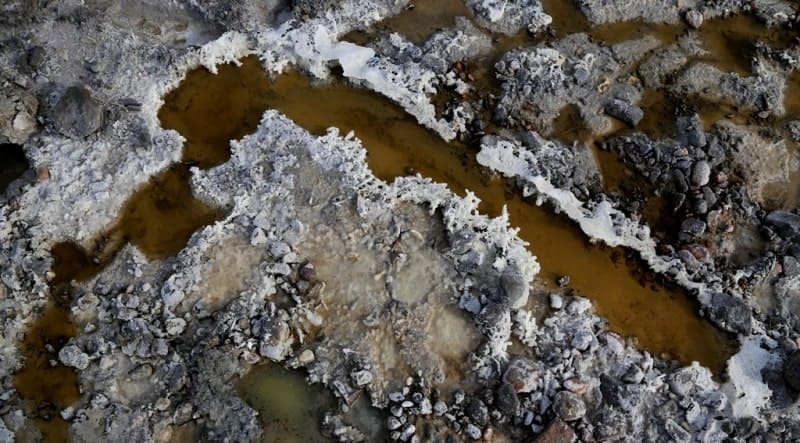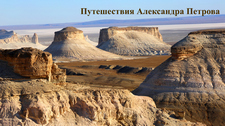Вы здесь
Kainatpa Tuz salt deposit.

Natural attractions of Kazakhstan.
“On the eastern side of this ridge, in a hollow, lie salty springs called Karkaranei-Kainatma-Tuz. When they exit, the springs form a reservoir covered with a solid hardened mass of alkaline mud. In the middle of this crust, reassuringly, from the action of an underground (speaking in the strict sense - by the word earth we mean the upper solonetzic deck) (in this case, the cover, the upper layer) of the spring, a regular cubic mass of the same matter was formed. Its height is 1.5 sazhens, length - 3, width - 2.5 sazhens.
Chokan Valikhanov. "Diary of a trip to Issyk-Kul." 1856. Volume 1. Page 306 - 357.
“Who was beaten by life, he will achieve more,
A pood of salt who has eaten appreciates honey more.
Who shed tears, he sincerely laughs,
Who died, he knows that he lives.“
Omar Khayyam. Persian poet, 1048 - 1131.
Trip from Almaty to Tien-Shan mountains.
Geographic location of Kainatpa Tuz salt deposit.
Kainatpa Tuz salt deposit is located at an altitude of 1,965 meters above sea level on right bank of small Kainatpa Tuz stream in eastern part of Shoaldyr Mountains, 4 kilometers southeast of village of Karkara and 17.3 kilometers south and slightly east of village of Kegen in Kegen district of Almaty region.
Kainatpa Tuz salt deposit belongs to the Chulyadyr Formation, which is distributed only in the interior regions of the Karkara Depression. Here, it is represented by gray, greenish-gray, brownish, and yellowish clays containing lenticular and sheeted deposits of various halite, glauberite, and thenardite rocks.
The formation is rich in saline and gypsum-bearing clays and gypsum. Interlayers of light brown siltstones and silty clays are occasionally encountered. Interlayers of gray marls are found in the upper part of the formation. If you drive from the village of Saryzhaz, past the villages of Zhana Tasashy, Tasashy, and Sarykol, and 4 kilometers before the village of Karkara, you'll see a huge white spot on the right bank of the small Kainatpa Tuz stream this is salt.
Here lies a small deposit of natural salt outcrops, 308 meters long and 73 meters wide. Further downstream, on the left bank of the stream, there are also salt outcrops. Beautiful crystals are found in small puddles and salt placers. In May 1856, explorer and traveler Shokan Valikhanov visited this deposit on his way to Lake Issyk-Kul.
He also wrote a short description of the site, which is at the top of this article. If you drive from the village of Saryzhaz toward the village of Karkara, passing the villages of Zhana Tasashi, Tasashi, and Sarykol, a large whitish spot stands out sharply to the right of the road 4 kilometers before Karkara.
This is a natural salt outcrop here, the salt layer is exposed and practically reaches the surface. The length of the outcrop is approximately 300 meters, and the width is up to 70 meters. Further downstream, on the left bank, additional salt outcrops are found.
Beautiful, perfectly shaped crystals can be found in small salt puddles.
Historical mention of Kainatpatuz salt deposit.
In May 1856, Shokan Valikhanov visited the area while traveling to Issyk-Kul. He noted the unusualness and accessibility of the salt, which "lies openly, as if nature itself had brought it to light for man." This place has indeed long served as a source of salt for local residents and nomads passing through the Karkara Valley.
Legend of Kainatpa Tuz Salt Spring.
Elders of Karkara said that a shepherd named Kainatpa once lived in these parts. He was known for his kindness and gentle heart, and never refused to help a traveler. But one day, years of severe drought descended on the valley: the grass died, and the herds began to die.
People began to abandon their villages. Unwilling to see the land of his ancestors perish, Kainatpa prayed at the spring every day, asking for rain. However, one day he realized that not only were the herds perishing - the people had lost their zest for life.
And then he prayed for the power of renewal, not for water. The next morning, salt crystals glistened in the spring bed - pure as mountain ice and strong as the spirit of the steppe people. The people understood the sign: to preserve life, one must know how to cherish what one has and accept the bitter as an experience.
Since then, the spring has been called Kainatpa Tuz - "Kainatpa salt." It is said that anyone who takes a small crystal here and keeps it will be able to distinguish truth from flattery and light from emptiness.
How to get to Kainatpa Tuz salt deposit.
Route:
Almaty - Kegen village - Karkara village - from Karkara village, drive straight ahead, avoiding bridge over Karkara River. Road leads to villages of Sarykol and Ereul. 3.7 kilometers from southern border of Karkara village, you will see a large white spot on left side of road; this is the natural outcrop of Kainatpa Tuz salt.
Road surface: asphalt.
Best time to visit: May - September; the soil may be soggy in other months.
Travel tips:
Wear waterproof footwear: salt corrodes leather and fabric.
Avoid picking up large chunks of salt - take care of the natural feature.
Best crystals are found in small, dried-up puddles at the foot of the outcrop.
Surrounding valley offers excellent photographic opportunities, especially at sunset, when the white salt turns pink with the sky.
Karkara Salt Depression.
Karkara Depression is located behind the low Chaardzhan-Chubardzhan Mountains, east of the Issyk-Kul Depression. It is bounded to the north by the Ketmen Range and to the south by the Terskey-Alatau Range. The Bas-Ogly-Tastau, Yelchi-Buiryuk, and Karatau Mountains, converging with the Ketmen Range, close the depression to the east.
The Karkara Depression is filled with Cenozoic sediments that form an asymmetrical megasyncline, the northern limb of which plunges at an angle of 8 - 10°, and the southern limb at 50 - 80°. Along the axis in the northwestern part of the depression, a fairly large anticline extends, expressed in relief by the Chul-Adyr (Sholadyr – A.P.) ridge.
Salt-bearing deposits are exposed in numerous karst sinkholes and on the right bank of the Karkara River. The band of salt-bearing deposit outcrops is also clearly visible along numerous salt springs, around which mirabilite icings (shors) form, particularly widespread on the southeastern slope of the Chul-Adyr (Sholadyr – A.P.) ridge.
Brief information on the presence of salt-bearing deposits in this area is provided in the works of K. I. Argentov and N. G. Kassin. In 1931, P. A. Gryushe was one of the first to identify thenardite in the salt-bearing deposits of the Chul-Adyr ridge.
From 1933 to 1943, the Chul-Adyr deposit was explored by S. S. Lark, F. I. Lifshits, I. S. Trigulov, and A. Ya. Krylov. However, these deposits were most thoroughly studied between 1953 and 1956 by V. A. Shurygin, I. K. Smeshlivy, and R. Z. Mingaliev.
During this time, A. I. Dzens-Litovsky and A. A. Ivanov visited the deposit and provided recommendations on exploration methods. Exploration work revealed the complex structure of the salt-bearing strata. In addition to rock salt, it includes lenticular and tabular bodies of glauberite and thenardite rocks.
In subsequent years, no specific studies of the salt-bearing deposits were conducted, although individual questions regarding the stratigraphic position and formation conditions were addressed by A. V. Goryachev (1959), A. B. Li (1962), I. M. Chabdarov, O. V. Bazhanov, A. A. Kolesnikov, and others.
According to B. A. Shurygin et al. (Dzens-Litovsky et al., 1964), the thickness of the formation reaches 700 meters.
Geographic coordinates of Kainatpa Tuz salt deposit: N42 ° 51'51 E79 ° 16'12





Authority and photos by:
Alexander Petrov.
Vladislav Vasilyevich Blagovidov. "Neogene Salt-bearing Formations of Central and Middle Asia”. 1978.







